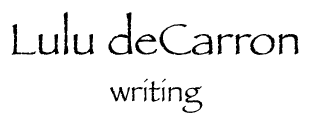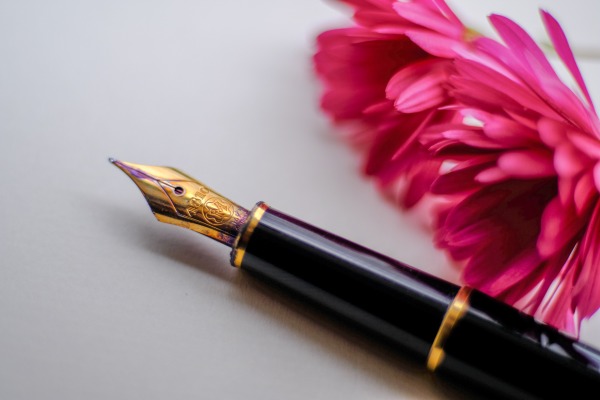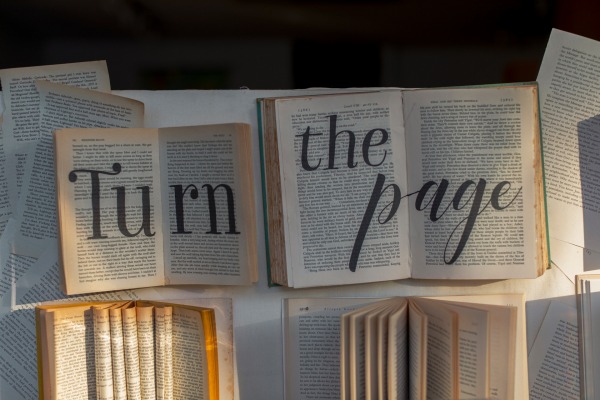Cut To The Chase
Whoa, Maybe You Should Slow Down A Bit
My friend Nikila arrived at the shop after a grueling 8 hour drive from
Toronto. She sat at a table, clearly happy to be home and out of the
car. “Can you make me a frothy iced latte, Lu. she asked, and finish the
story you began before I left?”“Which story, I asked?” With a smile, she answered, “The story of Margaret Holloway, The Shakespeare Lady.”
The shop was quiet; my friend Jack was the only other person there, so I had time to go into an animated story mode. When I finished, Jack looked up and said, “Lu. you should begin writing those stories down, there might be a book in there somewhere.”
My coffeehouse was a treasure trove of stories.
I told him I’d been thinking of keeping a journal for that very reason, but it seemed daunting while running the business.
“Just
write one story, Jack said, I’ll edit it for you.” I agreed, delighted
with his offer, asking which story he would like me to write first “The
one you just finished, he replied, I love that story. I’ve heard you
tell it many times.”
Jack is a successful storyteller and writer, I was thrilled that he would edit.
Over that weekend, I wrote, struggling because I began to realize the difference between telling a story and writing it down. But, I kept at it. On Monday, I presented Jack the essay with a nervous smile as if handing coffee beans to “El Exigente.”
After what seemed an eternity, he looked up and smiled warmly.
“I
love this story, but you wrote a quick sketch of that story, not the
story you tell.” I looked at him, bewildered. “Let me explain, he said.”
“Almost
every new writer, in their eagerness to tell a story, writes them down
quickly. They can’t wait to see the finished piece, but in doing so,
“They Cut to the Chase,” they leave out the structure and voice of the
piece. Subsequently, a great story becomes flat, and they will lose the
readers’ interest. We’ve all done that, he said, I did that when I
started out as a writer.”
Jack Hitt
“Would you show me what you mean exactly, I asked, I’m not sure I understand?”
“When
you begin writing your next story, write it as if you’re telling the
story to someone.” Your first draft will be what we call a “vomit
draft.” From that draft, you’ll begin to edit your story. You’ll
probably need to write, especially in the beginning, at least three
drafts. This is normal, and necessary to take out what’s superfluous so
the reading flows. Sometimes, you’ll need to kill your darlings. Those
beautiful lines you cherish that need to be cut because they do nothing
to move the story forward.” It’s painful, but we all have to do it.”
Jack Hitt

I
have since sold my business and revisited the desire to write down my
stories. I have to keep reminding myself of Jack’s advice. When I
remember his words, my stories have life. When I wrote this essay I
wrote it and then looked at it critically. It wasn’t right. I had to
edit more. Even now, I have to keep reminding myself not to “Cut To The
Chase.”
I
realize now that telling a story and writing it down use different
skill sets. There are days I still struggle with the stenography of
writing, but I will persevere. Every time I write something, I learn
something. It’s never-ending. A little frustration, a lot of joy.
"Telling stories is one of the most powerful means that leaders have to influence, teach, and inspire. What makes storytelling so effective for learning? For starters, storytelling forges connections among people, and between people and ideas. Stories convey the culture, history, and values that unite people. When it comes to our countries, our communities, and our families, we understand intuitively that the stories we hold in common are an important part of the ties that bind."by Vanessa Boris and Lani Peterson, Psy.D., a psychologist, professional storyteller and executive coach.
https://www.harvardbusiness.org/what-makes-storytelling-so-effective-for-learning/
I
hope you’ve enjoyed this essay, and it will help you in some way. As
writers, we benefit from all the writing wisdom from writers who are so
kind to share it with us.
“Marketing is no longer about the stuff that you make, but about the stories you tell.”
– Seth Godin, author, entrepreneur, marketer, and public speaker
Some writing calls for "Cut to the Chase. Another take on the subject by Ryan Justin.
https://medium.com/this-life-we-live/say-what...
"Are you suggesting that coconuts migrate?”
My Bio...



